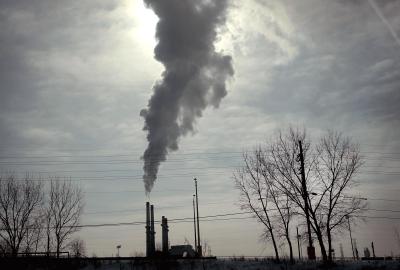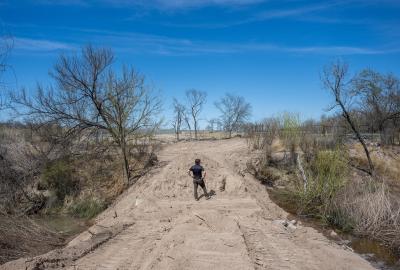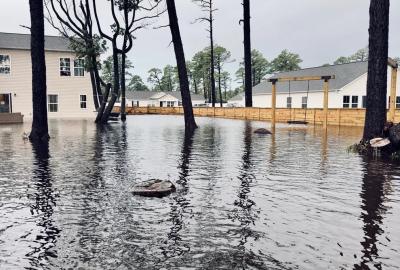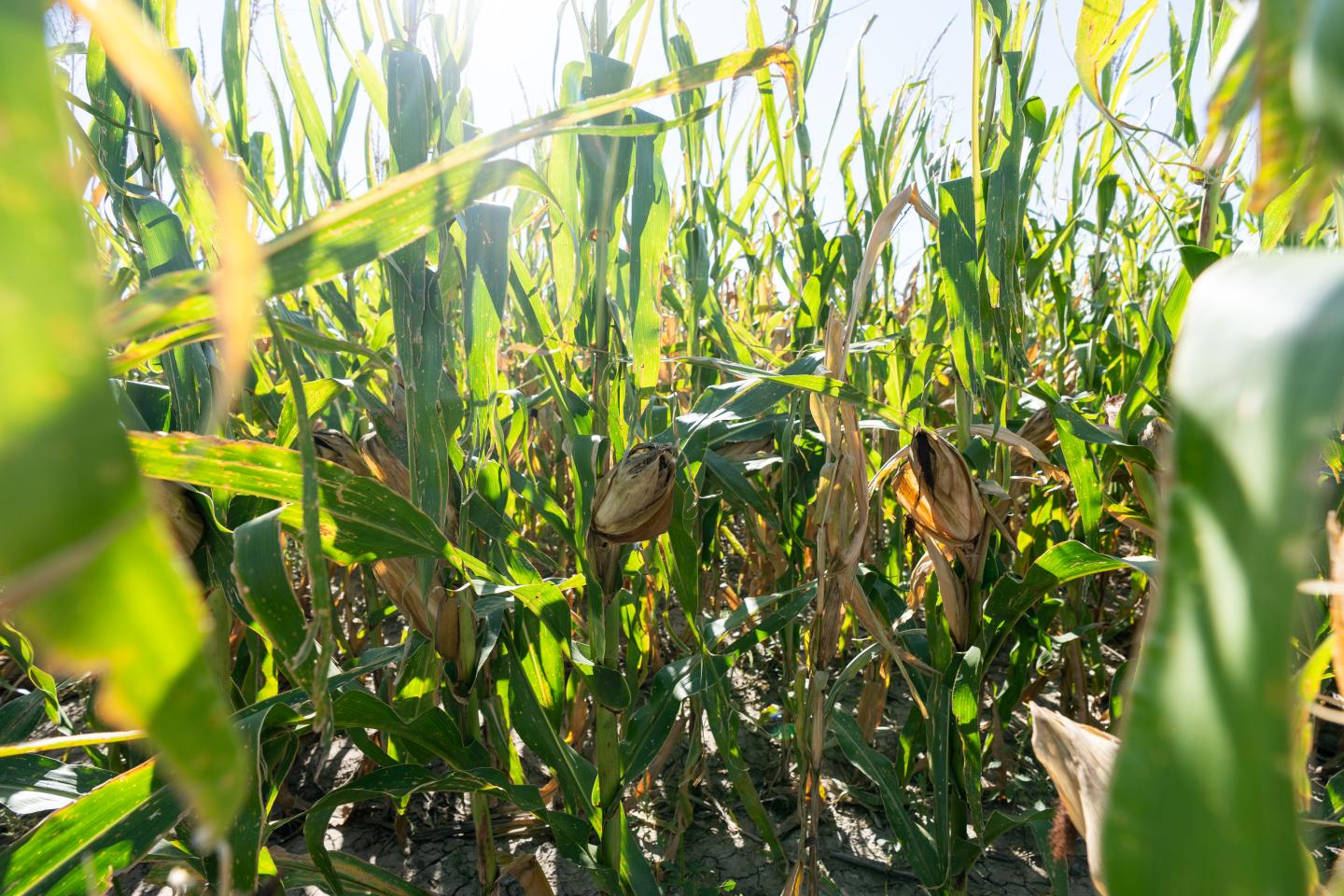
Kansas farmers go high-tech to fight drought
In southwestern Kansas, vast open skies and wide flat plains make it easy to see what all your neighbors are getting up to, which can make it hard to try doing something new.
Dwane Roth felt this pressure one warm night as he looked out across his fields and watched as, one by one, all of his neighbors turned on their pivot irrigation systems. As hundreds of strobe lights lit up the dark sky, Roth felt mounting alarm. It had been hot, dry and windy, and the leaves of his corn were starting to shrivel up. He was itching to turn on his irrigation system, but instead, he turned on his computer.
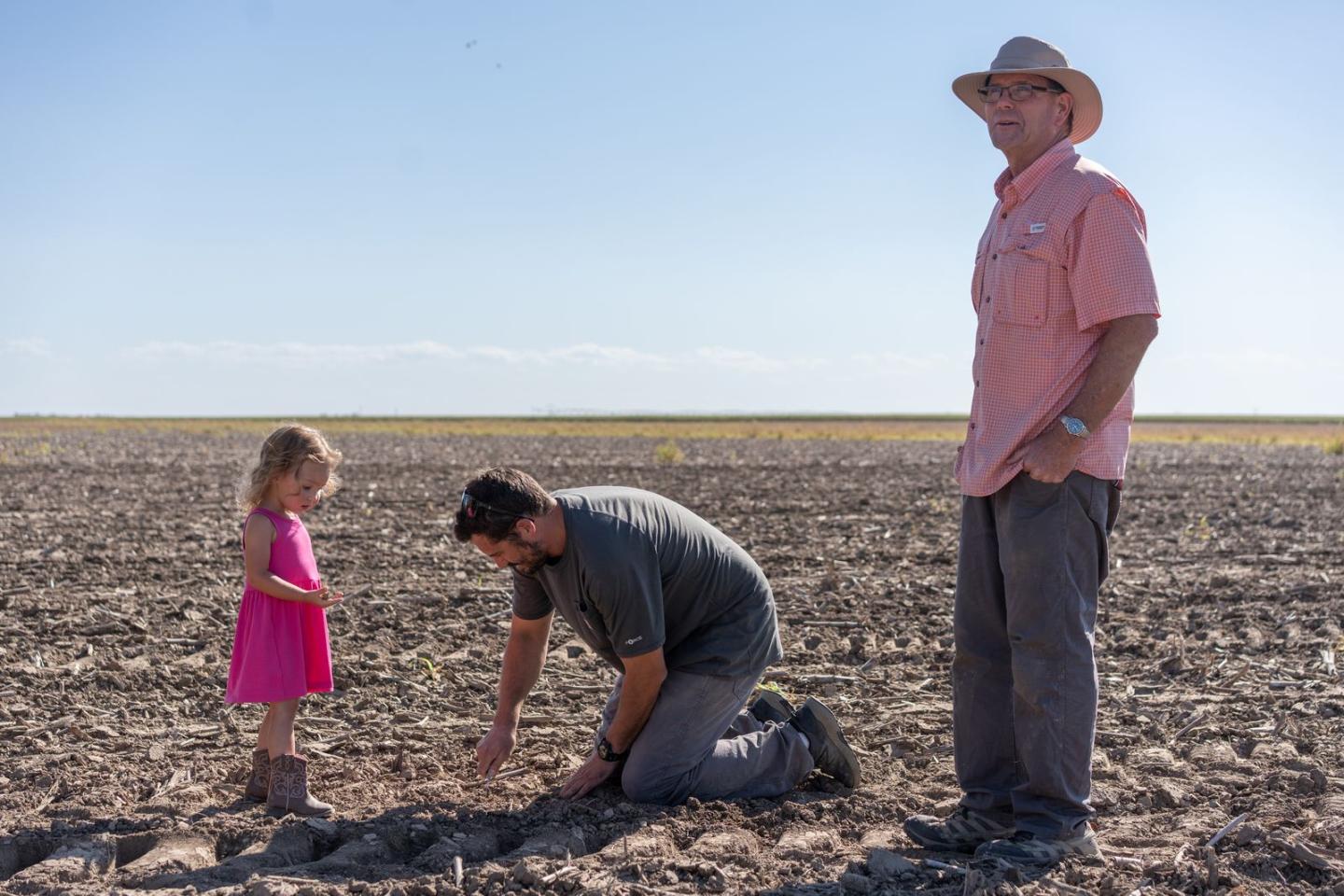
The data he saw kept that itch in check — showing him that while the top layer of his soil was dry, further down there was still plenty of moisture. That year, Roth saved millions of gallons of water, without affecting his yield.
Roth, a fourth-generation farmer from Finney County, KS, has been at the forefront of data-driven water conservation in Kansas agriculture, a role he first took on out of interest, and which he’s now convinced is a necessity. As water supplies in Kansas, and throughout the western half of the United States, become more constrained from decades of drought and warmer temperatures, agricultural communities are feeling the pinch.
According to Roth, the future of farming in Kansas depends on whether he and other farmers like him can leave the land better than they found it.
The shrinking Ogallala Aquifer
In Kansas, agriculture is king. The secret to the state’s farming success is not just the rich soil that covers it, but also the immense reservoir beneath it — the Ogallala Aquifer, the largest freshwater aquifer in North America. A roughly 10-million-year-old deposit of groundwater, ranging from just a few feet to hundreds of feet beneath the surface, the Ogallala stretches all the way from South Dakota through six states down to Texas, supporting about $35 billion in agriculture every year and drinking water for 2.3 million people.
But ever since the great Dust Bowl of the 1930s, when the federal government assigned farmers irrigation rights that accelerated drilling into the aquifer, its groundwater levels have been dropping. Today's irrigation technology is pumping out water that has been in the aquifer for hundreds of thousands of years in just minutes — a rate which far outpaces how fast nature can replenish it.
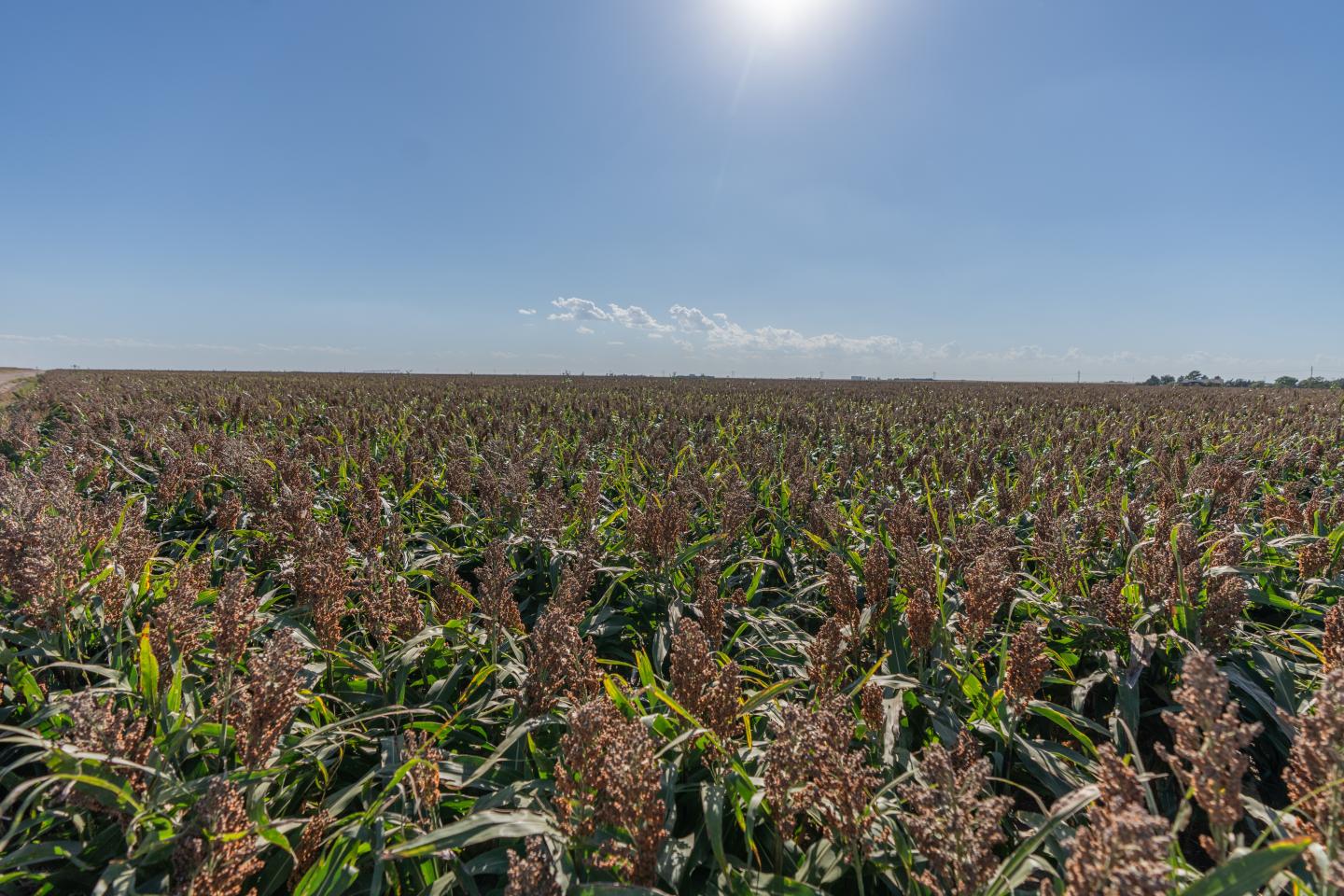
The looming crisis is only made more dire as climate change further constrains western water supplies. Greenhouse gas pollution, largely from fossil fuels, traps heat in the atmosphere, shifting precipitation patterns and fueling more frequent and intense droughts in the western U.S. If pumping continues at the current pace, southwestern Kansas will run out of water in the next 40 to 50 years, with certain areas running dry in the next two decades.
Environmental news that matters, straight to your inbox
Harnessing data and digital tools for water conservation
“Out here the mentality has always been, put more water in, get more crops out,” says Roth, who admits he was skeptical when he was first approached about using soil moisture probes to collect water data on his farm.
“Everyone is always trying to sell farmers something,” he says. “So I told that salesman that he could stick those probes up his….”
Roth later learned that the probes would be free through a USDA program. Three years later part of his farm became one of the region’s first Water Technology Farms, demonstrating different irrigation technologies and other practices that can maintain production while reducing water use, like bubbler irrigation systems that deliver water directly to the roots of plants to minimize total water loss.
One of the tools that Roth is helping get the word out about is OpenET. A collaboration between Environmental Defense Fund, NASA, Desert Research Institute, California State University Monterey Bay, Google and leading scientists across several research institutions, OpenET is a free online platform that provides easily accessible satellite-based data on one of the most important pieces of water management data — how much water crops consume.
The ET in OpenET stands for evapotranspiration — the process of water moving from land and plants to the atmosphere, which is a measurement of crop water use. Before OpenET was launched, this vital information, which helps farmers figure out how to irrigate their crops more efficiently, wasn’t easily available. Data was fragmented, hard to access and often cost-prohibitive.
Now, Roth and EDF are also thinking of new ways to apply OpenET that conserve water while still feeding the nation.
In 2022, a severe drought hit southwestern Kansas, and one of Roth’s irrigated corn fields suffered heavy losses. To ensure his crop insurance claim would be valid, standard guidelines required that he continue to irrigate the field until an adjuster could come out to verify the loss. At the end of the season, Roth and others looked at OpenET and found that irrigation could likely have stopped weeks earlier, potentially saving more than 18 million gallons of water.
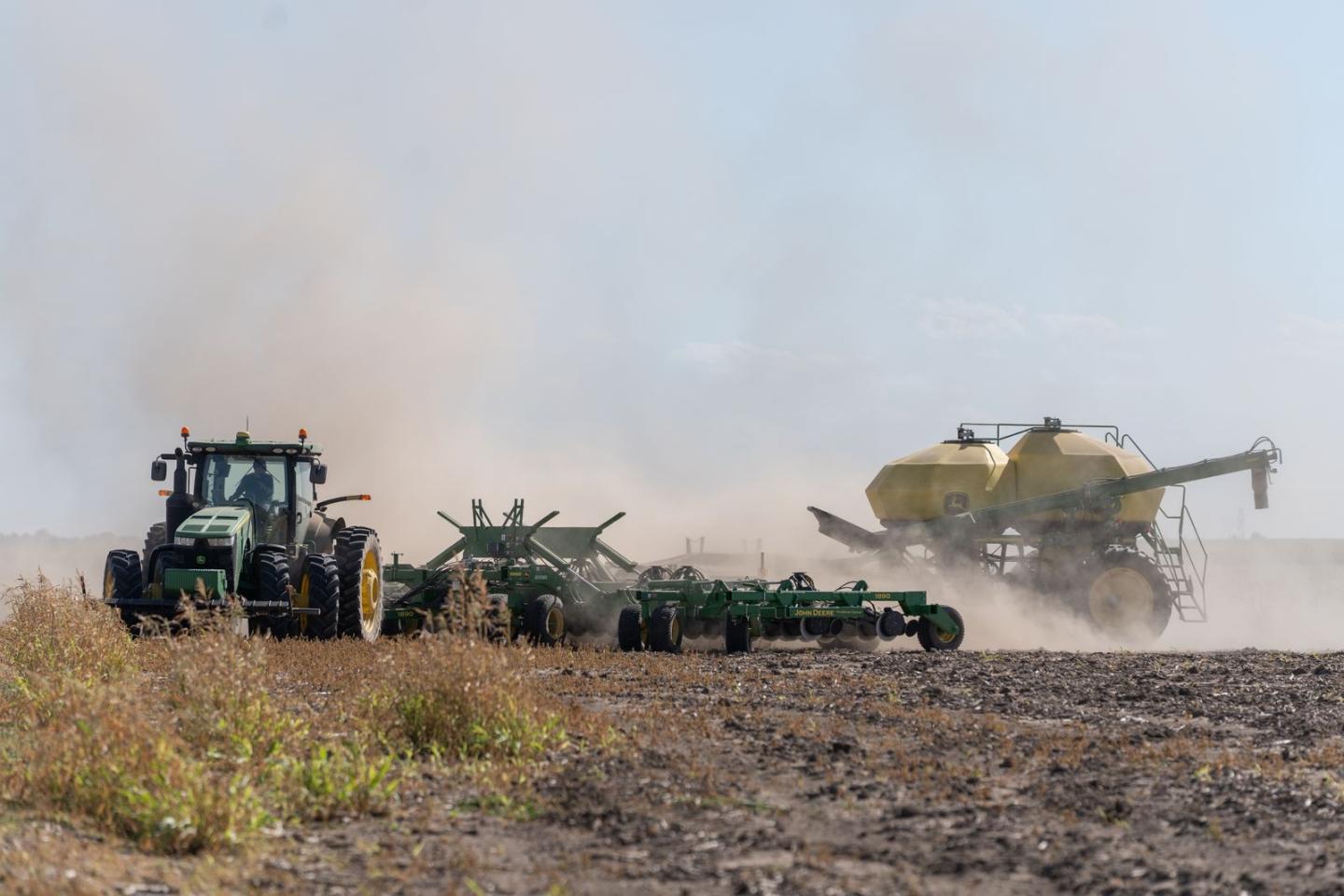
“We’re exploring if OpenET can help to remotely verify crop loss, enabling farmers to conserve scarce water resources when yields are no longer viable,” says Rachel O’Connor, who works on resilient water systems at EDF.
For decades, corn has been a popular choice among Kansas farmers — a reliable, livelihood-supporting crop. But as water becomes an increasingly scarce resource and weather patterns shift, other crops in water stressed areas may play an increasingly important role in sustaining farming for the future in Kansas. A recent study by EDF found that Kansas farmers may need to shift about 30% more of their land to less water-intense, drought-resilient crops by 2050. EDF, Cornell University, and Kansas State University are working with producers and corporations in drought prone western Kansas to identify opportunities for water savings, including the role of less water intensive crops, which can be evaluated using OpenET, such as Sorghum, an ancient grain that can be used in livestock feed.
And this year, EDF’s online water accounting platform will have a test run in Kansas. The new Kansas instance of the platform will build on successful implementations in other states, including Nebraska and California.
“The water accounting platform is like managing a checking account for water,” explains O’Connor. “You can see how much water is available in your account, how much is coming out and plan your water budget to stay in balance.”
Farmers or water managers can integrate water data from multiple sources into the platform, including from OpenET, satellite data, sensor networks like soil moisture probes and flow meters. By offering a more complete picture of how much water is coming into and being pulled out of the soil, in near real time, the water accounting platform can help people and entire communities make informed decisions about how to use increasingly limited water resources.
But changing how things are done on a family farm is often fraught. Roth says that farming is so much more than a job; it’s a way of life, an identity. It’s in the blood.
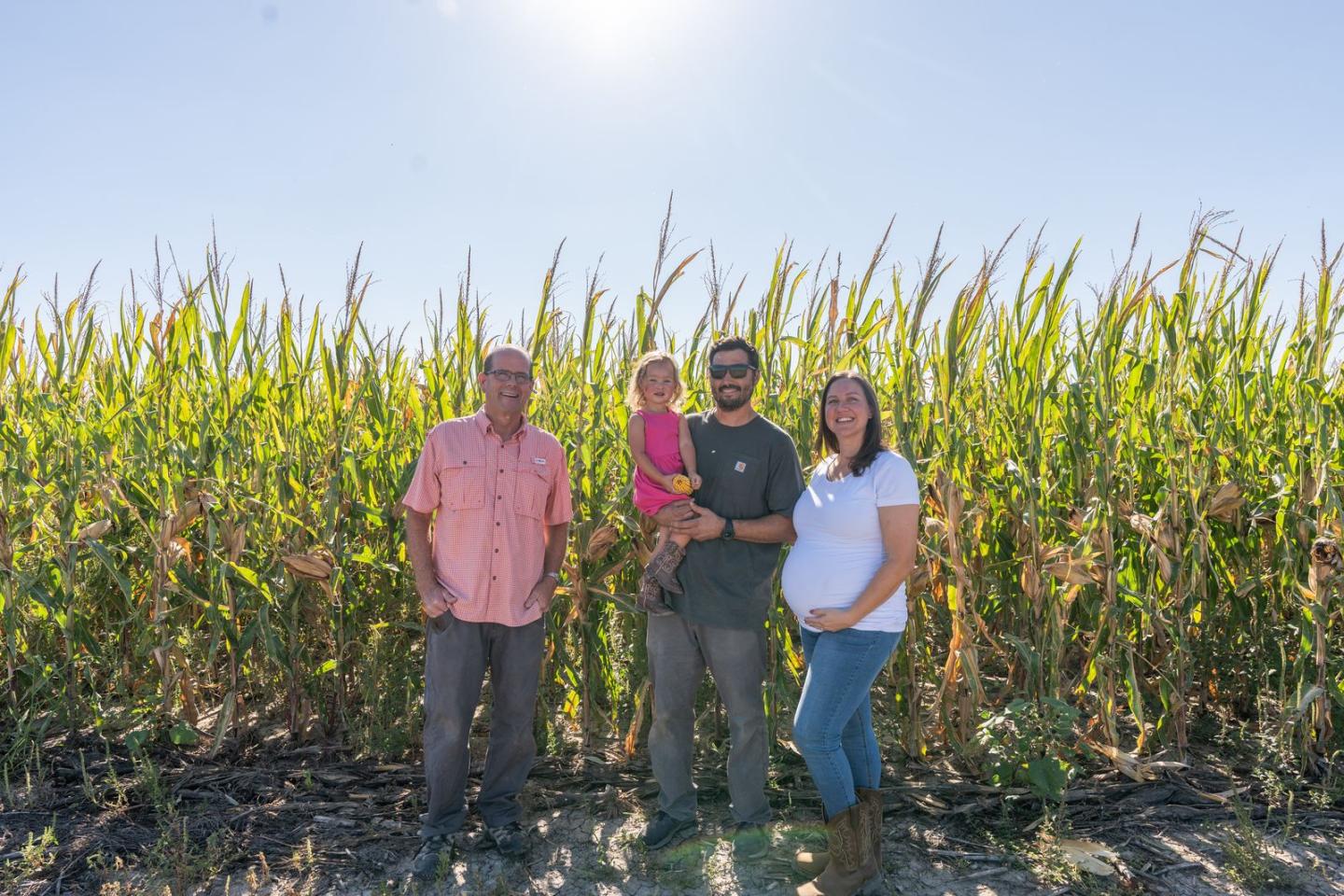
He remembers the first time he changed how he tilled the fields to save moisture and cut back on diesel costs.
“That really irritated my dad,” Roth recalls with a laugh. “He didn’t talk to me for most of the summer.”
Roth’s nephew, Zion, has now taken over the family farm while Roth travels the state and the country, sharing his water conservation experiences and expertise with anyone who will listen.
“I got to choose to experiment with different types of water conservation on my farm,” said Roth. “But for Zion, it’s not going to be a choice. He has to conserve water if he wants to keep on farming. Maybe Zion’s kids will want to farm one day. Or maybe they won’t. My hope is that what we’re doing today will at least give them that choice. Without water, the choice is made for them.”
